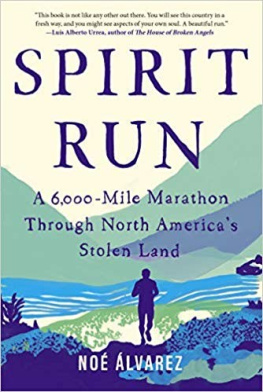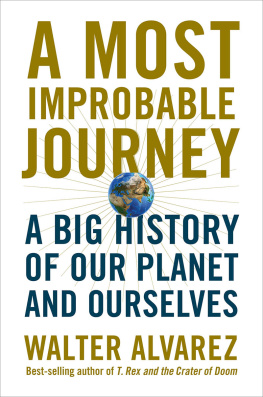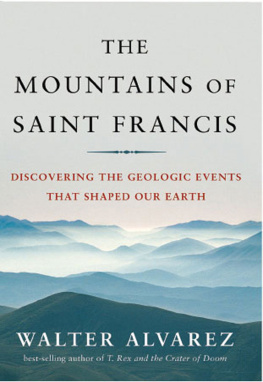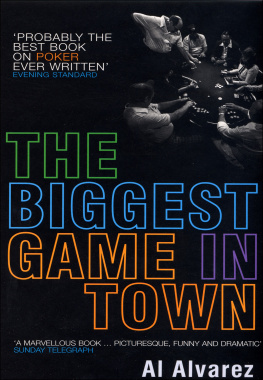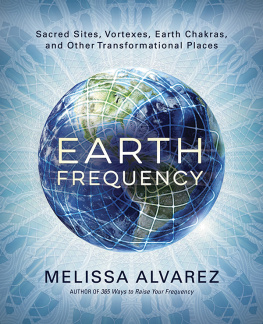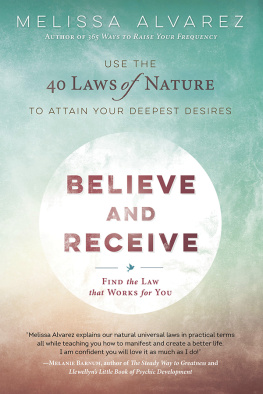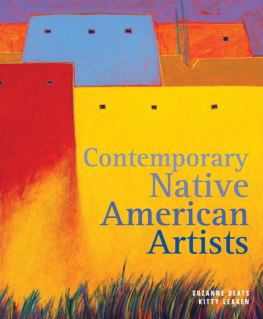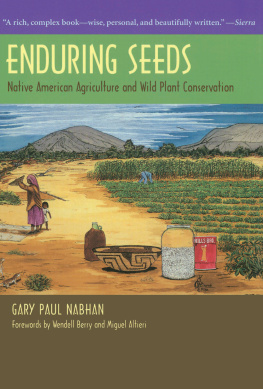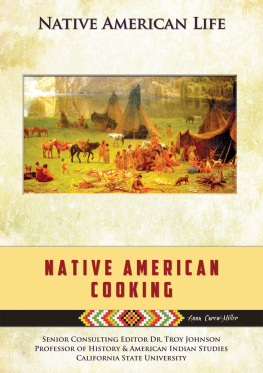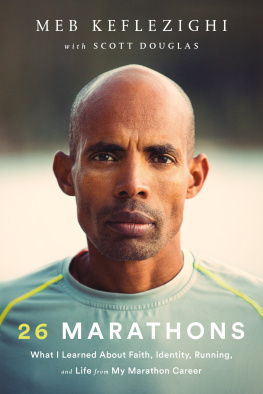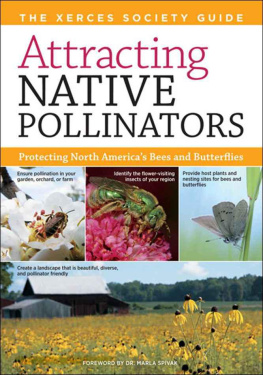This book is a memoir. It reflects the authors recollections of experiences over time. Some names and identifying details have been changed to protect the privacy of individuals.
Copyright 2020 by No lvarez
All rights reserved
ISBN: 978-1-948226-46-2
Jacket design by Nicole Caputo
Book design by Wah-Ming Chang
Catapult titles are distributed to the trade by
Publishers Group West
Phone: 866-400-5351
Library of Congress Control Number: 2019944451
Printed in the United States of America
1 3 5 7 9 10 8 6 4 2
To my Mia, mother and father, brother and sister,
and all the working-class warriors hammering out
a future for the rest of us
Contents
BRITISH COLUMBIA, CANADA: Prince George, Alkali Lake, Lillooet, Melvin Creek, Mount Currie, Whistler, Vancouver.
WASHINGTON, UNITED STATES: La Conner, Coupeville, Port Angeles, Neah Bay, Rialto Beach, La Push, Quinault.
OREGON: Portland, Eugene, Reedsport, Coos Bay, Battle Rock, Gold Beach.
CALIFORNIA: Blue Creek, Klamath River, Weed, Mount Shasta, Redding, Covelo, Ya-Ka-Ama Forestville, Richmond, Berkeley, Oakland, Mission San Jos (Fremont), Watsonville, Santa Maria, Solvang, Santa Barbara, Montecito, Oxnard, Santa Paula, Piru, Pasadena, East Los Angeles, Anaheim, Chicano Park San Diego.
ARIZONA: Yuma, Ajo, Tucson, Nogales.
MEXICO: Magdalena de Kino, Hermosillo, Baha Kino, Punta Chueca, Isla Tiburn, Ptam, Ciudad Obregn, San Miguel Zapotitln, Los Mochis, Culiacn, Mazatln, Chametla, Acaponeta, Huajicori, Tepic, Ixtln del Ro, Magdalena (Jalisco), Teuchitln, Guadalajara, Tonal, Chapala, Ajijic, Tuxcueca, Sahuayo, Jiquilpan, Morelia, Ptzcuaro, Teotihuacn, Amatln de Quetzalcatl, Cuernavaca, Taxco, Ixcateopan de Cuauhtmoc, Oaxaca, Tuxtla Gutirrez, Caracol Oventic, Acteal, Tonin, Cascadas de Agua Azul, Comitn.
GUATEMALA: Huehuetenango, Zaculeu Ruins.
2003. Among the pines of Bella Coola, in Canadas British Columbia, Canadian authorities escort a seventeen-year-old mother, in handcuffs, to identify and unearth the site where she buried a baby son a few days earlier. The teenage mothers nameCrow, of the Secwpemc Nation, whose full name translates to Water Wavesis reflected in her tears. The baby she buried was her firstborn son, pronounced dead at seven weeks old. For forty-nine days her baby lived with the power of a name, under the protection of Secwpemc tradition of caring for ones own, blanketed with the dreams of a mother who sang to him until the very end, when he stopped eating. Fearing that the hospital would take him away, Crow wrapped him into his cradleboard and escaped with him into the forest.
She remembers that night in the mountains as very cold. The rain pelleted her as she and two others encircled the boy in a wall of ceremony before digging up a spot in the muddy earth with a shovel. The Secwpemc people bury their own. But on this February day the authorities unearth the body of the infant, Nupika Amak (One Who Can Travel Between Two Worlds), reversing the sacred order by which a Secwpemc mother makes peace with the loss of a son. They desecrate the earth in front of herland that had laid claim to Nupika Amaks spiritand bring him back to this world to be processed, tagged, and issued both a birth and death certificate. Then, they take his mother back into custody for questioning.
When asked why she didnt register her baby: Because she wanted him to be a freedom baby. Free from government oppression.

In 2004, in a salmon fish hatchery in Chickaloon Village, Alaska, where snow is still thickly packed onto the ground, and the air cuts a persons face like obsidian glass, thirty-year-old Chula Pepper, a traveler from San Diego, California, stares into a mirror of a bathroom with a Swiss Army knife in hand. No job, no relationship, no home. She grabs her long hair and cuts, like sickle to wheat, long, black strands, before settling onto the cold floor. Nearly bald. She shivers over the few things to her name: a backpack, some clothing, a sleeping bag, rain pants, and a troubled past. Tomorrow, she decides, life will be different.

In the small town of Smithers, Canada, nineteen-year-old Zyanya Lonewolf of the Gitxsan and Dakelh Nations quits her job flipping burgers at a McDonalds and relinquishes her role as caretaker of a household in tormentan incarcerated father, a drug-addicted mother, and a murdered cousin along Canadas Highway of Tears. Against her mothers wishes, she withdraws what little savings she has from an ATM, purchases a backpack, and breaks from all she has ever known to join a caravan of Indigenous runners.

Still farther north, in one of the coldest parts of the Vashraii Koo, or Arctic Village, Alaska, an elder named Ipana packs her life of sixty years into five oversize suitcases and travels to join the othersIndigenous runners from across the world congregating in Alaska for a race through North America toward Panama. In Fairbanks, Ipana, a leader in the Den territories, a community aligned with the migration patterns of the Porcupine caribou, faces a wind and thinks about those ancient runners who had passed through these lands, migratory protectors of the sun who had moved with the herds of caribou.
The time has come for Ipana to find within herself the spirit of those runners, the Sun People, to find the courage to leave home and spread an urgent messagethe Arctic is dying.
Around the same time, in Oakland, California, twenty-nine-year-old Cheeto awakes to the day on which his dream will come true. A dream of a run that unifies all the people of the world and that takes him far away from an area he no longer feels a part of, the Bay Area, to which he was brought over from Mexico when he was only two years old.
He has quit his job at EB Games, said goodbye to his nieces and nephews, and scavenged the Bay Areas thrift stores for warm clothing. He packs his backpack, takes farewell photos with family, then washes down a couple of Heinekens at a going-away party this afternoon. The next morning he boards a gray van, which will take him to Alaska.

Alone in the Haslett Basin, in the foothills of the Sierra Mountains in Fresno, California, a man dials into his Apache and Purpecha heritage, beating a drum for guidance. Here, beside a fire pit among ponderosa pines, in ceremonial sweat, Andrec prepares himself spiritually and mentally to colead runners through North America. He meditates for the courage and the clarity to lead Indigenous warriors safely across vast lands. He sings and stokes the fire, calling on the wisdom of his Apache mother and Vietnam-veteran elders who taught him about committing to things that are bigger and greater than oneself. He channels the wisdom of the medicine bag around his neckApache protection, he calls itand drives a gray van all the way down to Los Angeles to pick up runners, before driving far north to Alaska, in search of that person that his father wasnt.

In Arizona theres a man whose soul is branded by the tragedy of the copper mine strike of 1983. He, Pacquiao, the main leader of the run, was about ten years old when he witnessed his hometown of Ajo, Arizona, on lockdown, martial law enforced, the town besieged by bulldozers, snipers, police, and the National Guard. It was an event that displaced many residents, separated families, and converted the place into a near ghost town.
For four days and four nights Pacquiaoof Yaqui, Tohono Oodham, and pata heritagesubmerges himself in ceremony in an arid region of southern Arizona. He sweats, fasts, and prepares himself to carry forward the immense weight laid upon him two years prior by the elder Gustavohis mentor, a prominent labor-movement leader, and the founder of the sacred ultramarathons across North and South America, held every four years, known as the Peace and Dignity Journeys. Pacquiao co-organizes, with Andrec and Chula Pepper, a safe route across North America, starting in Alaska.
Next page
